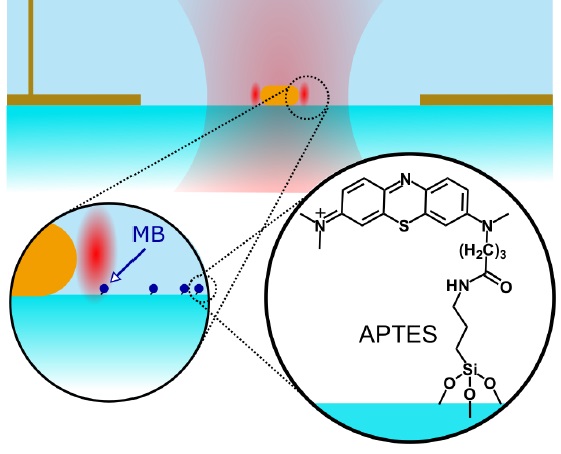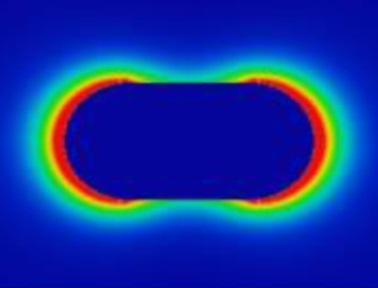24-02-2017
Individual molecules are extremely hard to see through feeble fluorescence. Tiny gold nanorods serve as new antennas to intensify their signal 500 times. Publication on February 24 in Angewandte Chemie.
In the early 1980’s, IBM created their world-famous picture of individual particles spelling out the company’s name. They had used a small electric force (STM) to see single particles for the first time. A decade later, scientists managed to actually see molecules in the human sense of the word—with visible light. They picked up on the molecules’ fluorescent light. Leiden physicist Michel Orrit was one of those pioneers.
Nanorod
Now Orrit and his group build further in that research, using tiny antennas to amplify the signal for better vision. Instead of a large metal antenna for radio waves, they use a small rod to catch visible light waves. This gold nanorod—40x80 nanometers in size—intensifies at both ends locally the electromagnetic field of light. If a molecule happens to sit at either end, it will fluoresce 500 times stronger than without the rod.
Redox
Orrit’s group publishes an article in Angewandte Chemie where they describe how they tested their concept on so-called redox reactions. These occur in any type of electric process, for example in solar cells. ‘We tested on redox reactions as a proof of concept,’ says Martin Caldarola, one of the authors. ‘At the same time, redox reactions are a very interesting application of our technique for many scientists, because they occur in so many processes.’

At both ends of the nanorod (yellow), the electromagnetic field of light is amplified by a factor 500 (red spots). If a molecule (blue dots) is situated there, its fluorescent signal is also 500 times stronger.
Midpoint
Caldarola tested the technique by determining the redox midpoint potential—a crucial indicator for a material’s ability to perform redox reactions. This gives for example its applicability for solar cells. The new method enables researchers to resolve the midpoint potential for each molecule, so they can investigate materials very precisely.
Publication
M.Sc. Weichun Zhang, Dr. Martín Caldarola, M.Sc. Biswajit Pradhan, Prof. Dr. Michel Orrit, 'Gold Nanorod-Enhanced Fluorescence Enables Single-Molecule Electrochemistry of Methylene Blue', Angewandte Chemie













